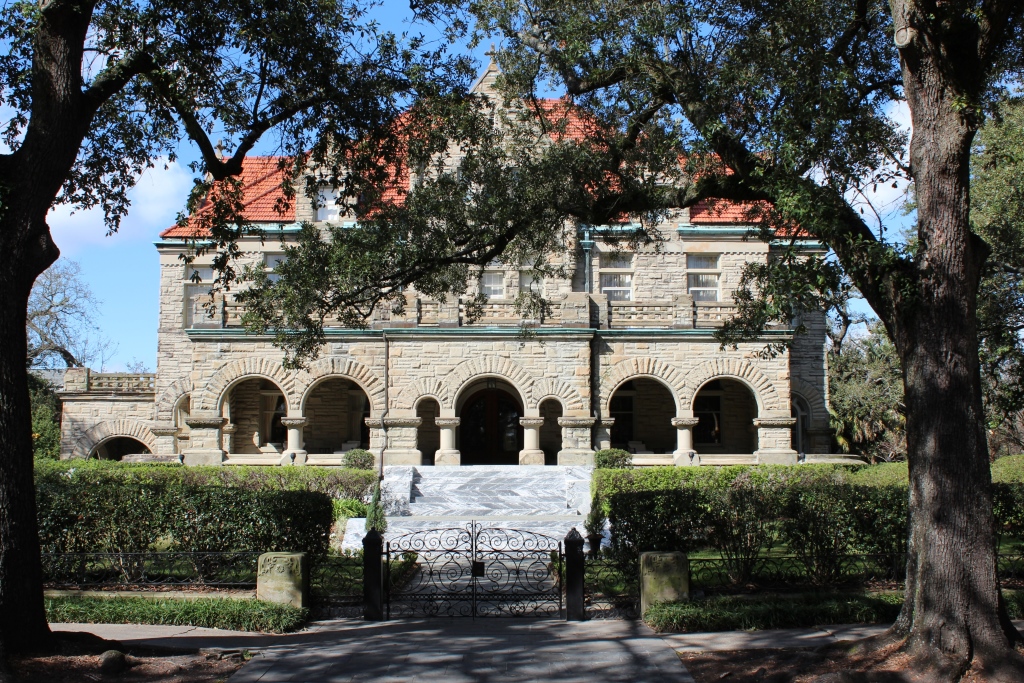
New Orleans is a major United States port and the largest city and metropolitan area in the state of Louisiana. The New Orleans metropolitan area, (New Orleans–Metairie–Kenner) has a population of 1,189,981, the 46th largest in the USA. The New Orleans – Metairie – Bogalusa combined statistical area has a population of 1,360,436 as of 2000.
The city is named after Philippe d’ Orléans, Duke of Orléans, Regent of France, and is well known for its distinct French Creole architecture, as well as its cross cultural and multilingual heritage. New Orleans is also famous for its cuisine, music (particularly as the birthplace of jazz), and its annual celebrations and festivals, most notably Mardi Gras and New Orleans Jazz & Heritage Festival. The city is often referred to as the “most unique” city in America.
New Orleans is located in southeastern Louisiana, straddling the Mississippi River. The boundaries of the city and Orleans Parish are identical. The city and parish are bounded by the parishes of St. Tammany to the north, St. Bernard to the east, Plaquemines to the south and Jefferson to the south and west. Lake Pontchartrain, part of which is included in the city limits, lies to the north and Lake Borgne lies to the east.
Geography
New Orleans is located at 29°57′53″N 90°4′14″W / 29.96472°N 90.07056°W / 29.96472; -90.07056 (29.964722, −90.070556) on the banks of the Mississippi River, approximately 105 miles upriver from the Gulf of Mexico. According to the United States Census Bureau, the New Orleans has a total area of 350.2 square miles, of which 180.56 square miles, or 51.55%, is land.
New Orleans is located in the Mississippi River Delta on the east and west banks of the Mississippi River and south of Lake Pontchartrain. The area along the river is characterized by ridges and hollows.
New Orleans was originally settled on the natural levees or high ground, along the Mississippi River. In fact, when the capital of French Louisiana was moved from Mobile, Alabama to New Orleans, the French colonial government cited New Orleans’ inland location as one of the reasons for the move, as it would be less vulnerable to hurricanes. After the Flood Control Act of 1965, the United States Army Corps of Engineers built floodwalls and man-made levees around a much larger geographic footprint that included previous marshland and swamp. Whether or not this human interference has caused subsidence is a topic of debate. A study by an associate professor at Tulane University claims:
While erosion and wetland loss are huge problems along Louisiana’s coast, the basement 30 to 50 feet beneath much of the Mississippi Delta has been highly stable for the past 8,000 years with negligible subsidence rates.
On the other hand, a report by the American Society of Civil Engineers claims that “New Orleans is subsiding (sinking)”:
Large portions of Orleans, St. Bernard, and Jefferson parishes are currently below sea level — and continue to sink. New Orleans is built on thousands of feet of soft sand, silt, and clay. Subsidence, or settling of the ground surface, occurs naturally due to the consolidation and oxidation of organic soils (called “marsh” in New Orleans) and local groundwater pumping. In the past, flooding and deposition of sediments from the Mississippi River counterbalanced the natural subsidence, leaving southeast Louisiana at or above sea level. However, due to major flood control structures being built upstream on the Mississippi River and levees being built around New Orleans, fresh layers of sediment are not replenishing the ground lost by subsidence.
A recent study by Tulane and Xavier University notes that 51% of New Orleans is at or above sea level, with the more densely populated areas generally on higher ground. The average elevation of New Orleans is currently between one and two feet below sea level, with some portions of the city as high as 20 feet at the base of the river levee in Uptown and others as low as 7 feet below sea level in the farthest reaches of Eastern New Orleans.
The above information, modified for brevity, is provided courtesy of Wikipedia and is licensed under the terms of the Creative Commons License.
Homes For Sale in New Orleans LA
- [impress_property_carousel property_type=”savedlinks” saved_link_id=”9593″ display=”4″ max=”24″ order=”low-high” autoplay=”1″ styles=”1″ new_window=”0″ ]
- [impress_property_carousel property_type=”savedlinks” saved_link_id=”6366″ display=”4″ max=”24″ order=”low-high” autoplay=”1″ styles=”1″ new_window=”0″ ]
- [impress_property_carousel property_type=”savedlinks” saved_link_id=”9590″ display=”4″ max=”24″ order=”low-high” autoplay=”1″ styles=”1″ new_window=”0″ ]
- [impress_property_carousel property_type=”savedlinks” saved_link_id=”9594″ display=”4″ max=”24″ order=”low-high” autoplay=”1″ styles=”1″ new_window=”0″ ]
- [impress_property_carousel property_type=”savedlinks” saved_link_id=”9595″ display=”4″ max=”24″ order=”low-high” autoplay=”1″ styles=”1″ new_window=”0″ ]
- [impress_property_carousel property_type=”savedlinks” saved_link_id=”9587″ display=”4″ max=”24″ order=”low-high” autoplay=”1″ styles=”1″ new_window=”0″ ]
- [impress_property_carousel property_type=”savedlinks” saved_link_id=”9588″ display=”4″ max=”24″ order=”low-high” autoplay=”1″ styles=”1″ new_window=”0″ ]
- [impress_property_carousel property_type=”savedlinks” saved_link_id=”9589″ display=”4″ max=”24″ order=”low-high” autoplay=”1″ styles=”1″ new_window=”0″ ]



